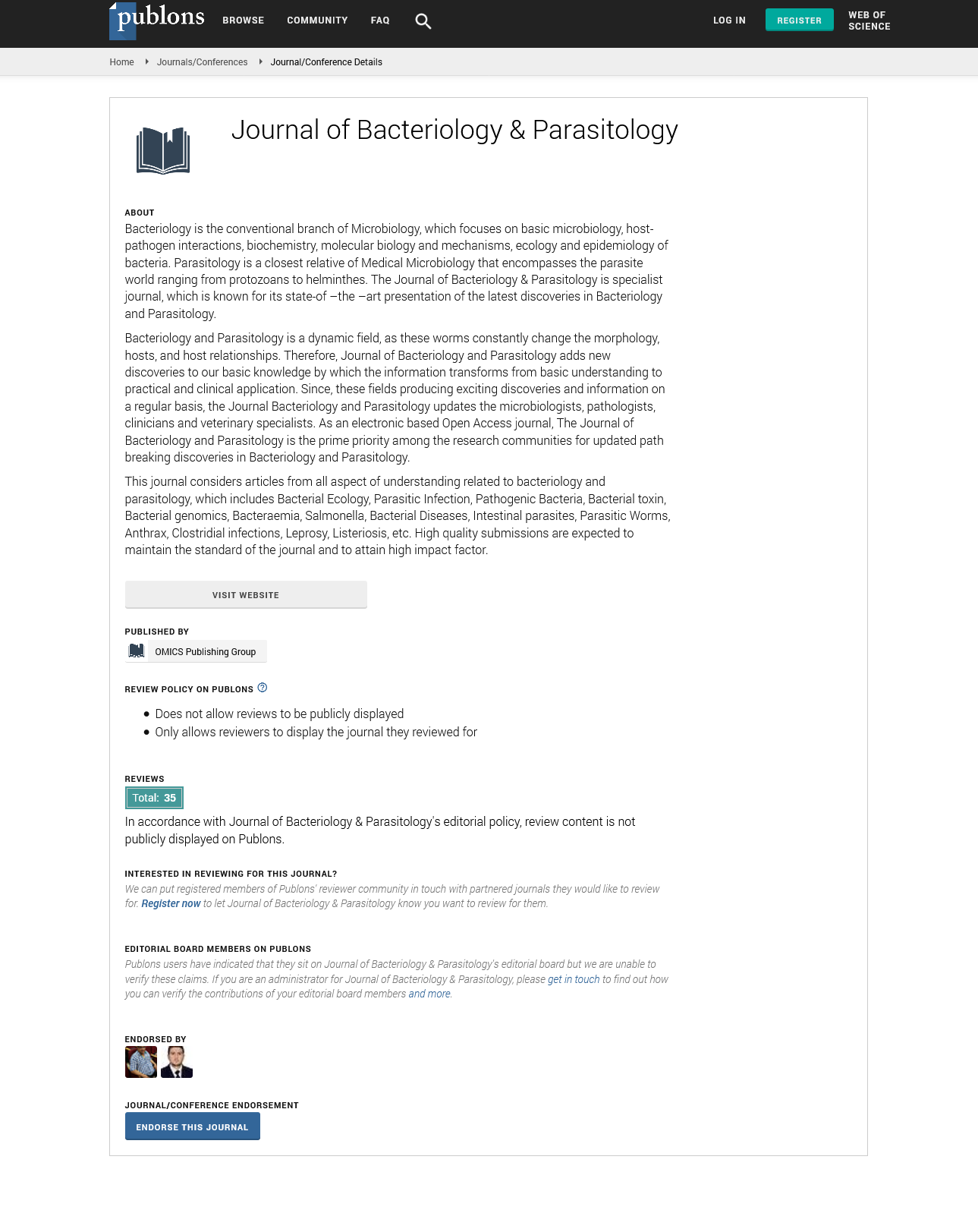Indexed In
- Open J Gate
- Genamics JournalSeek
- Academic Keys
- JournalTOCs
- ResearchBible
- Ulrich's Periodicals Directory
- Access to Global Online Research in Agriculture (AGORA)
- Electronic Journals Library
- RefSeek
- Hamdard University
- EBSCO A-Z
- OCLC- WorldCat
- SWB online catalog
- Virtual Library of Biology (vifabio)
- Publons
- MIAR
- Geneva Foundation for Medical Education and Research
- Euro Pub
- Google Scholar
Useful Links
Share This Page
Journal Flyer

Open Access Journals
- Agri and Aquaculture
- Biochemistry
- Bioinformatics & Systems Biology
- Business & Management
- Chemistry
- Clinical Sciences
- Engineering
- Food & Nutrition
- General Science
- Genetics & Molecular Biology
- Immunology & Microbiology
- Medical Sciences
- Neuroscience & Psychology
- Nursing & Health Care
- Pharmaceutical Sciences
Myeloperoxidase role in Amebic liver abscess in a Hamster model treated with ascorbic acid
5th International Conference on PARASITOLOGY & MICROBIOLOGY
July 12-13, 2018 Paris, France
Maricela Gomez Salvador
Escuela Superior de Medicina del Instituto Politecnico Nacional, Mexico
Posters & Accepted Abstracts: J Bacteriol Parasitol
Abstract:
Ascorbic acid removes hypochlorous acid and other free radicals, golden hamster (Mesocricetus auratus) were treated with ascorbic acid and were inoculated with Entamoeba histolytica trophozoites. In this article we will review the MPO role in the amebic liver abscess (ALA) evolution in hamsters treated with ascorbic acid. Two animal groups were formed: (1) Animals that received an intrahepatic inoculation of 1X106 E. histolytica trophrozoites and were sacrificed at 3, 6, 12 hours post-inoculation (Hepatic lesion group); (2) Animals with oral administration of 800 mg/kg of Ascorbic acid every 24 hours during the previous three days before the inoculation of the 1X106 E. histolytica trophrozoites (hepatic lesion+ascorbic acid treatment group). The animals of every group were sacrificed, the size and characteristics of the hepatic lesions were determined, and serum samples were taken, as well as samples from hepatic tissue, this was performed to quantify gene expression and the MPO activity in the hepatic tissue. Ascorbic acid treatment in the ALA susceptibility model in hamsters, induce different changes in the ALA percentage, as well as gene expression and MPO activity, probably due to HOCl removal and free radicals present in the amebic hepatic lesion. Although an increase in MPO gene expression was observed, it did not surpass the basal control level, indicating that the ALA has a significant influence in the MPO gene expression. This could indicate that ascorbic acid is a free radical collector that protects hamsters from liver damage by Entamoeba histolytica and that it does not affect the MOP.
Biography :
Maricela Gómez Salvador is a Medical student, studying 12th semester of Medicine in Escuela Superior de Medicina del Instituto Politecnico Nacional, with 4 years in the program Beca de Estímulo Institucional de Formación de Investigadores (BEIFI). She currently holds a rotating internship in the Hospital General Tacuba ISSSTE, having collaborations in the Centro Medico Nacional Siglo XXI, with publication of article in the national magazine of the IMSS.
E-mail: magosa.06@gmail.com

